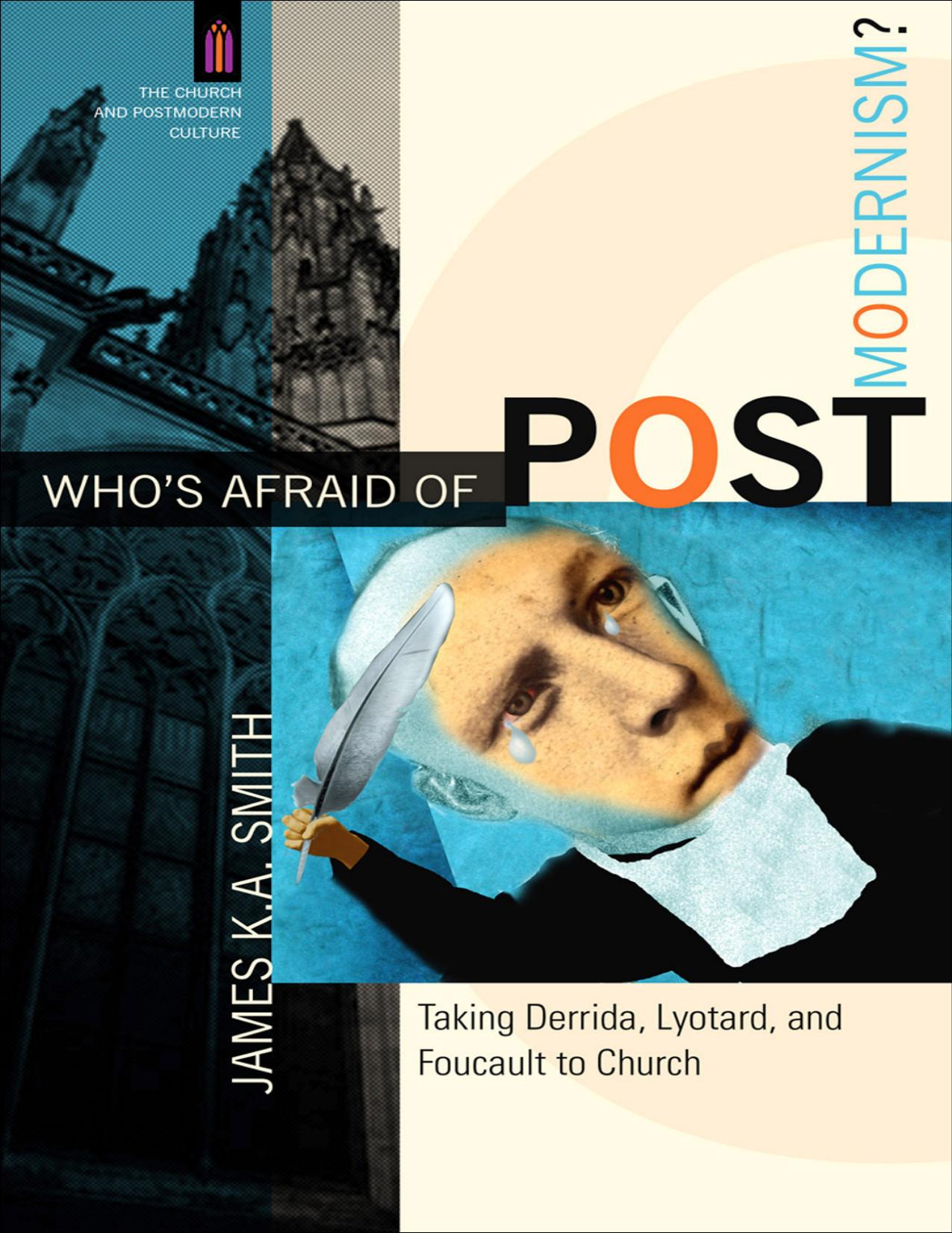Who's Afraid of Postmodernism? Taking Derrida, Lyotard, and Foucault to Church by James K. A. Smith

Author:James K. A. Smith
Language: eng
Format: epub, pdf
Tags: ebook, book
Publisher: Baker Publishing Group
Published: 2010-07-31T16:00:00+00:00
4
* * *
Power/Knowledge/Discipline
Foucault and the Possibilities
of a Postmodern Church
Michel Foucault’s attention is drawn to institutions of power: prisons and schools, hospitals and factories, sex and money. What could he have to say to a postmodern church? In this chapter, we’ll explore Foucault’s claim that “power is knowledge”in order to see its insight into Christian formation and discipleship.
Raising the Curtain: One Flew over the Cuckoo’s Nest
The hospital is a machine—that is Chief ’s thesis in One Flew over the Cuckoo’s Nest.1 The hospital is part of the Combine that “works over” individuals by means of its power, its control. The hospital’s walls hum with the sound of its machinery of surveillance and repression—“hum of black machinery, humming hate and death and other hospital secrets.”2 On the mental ward of this Oregon hospital, Chief—a longtime resident—is able, in a way, to see through walls and can thus observe the hospital’s machinations of power firsthand. Even the strategies aimed toward cure are in fact systems of control and domination: from the orderlies to the medication, from the strict schedule and work regimen to the “therapeutic circle” that serves only to humiliate— all performed to the tune of banal background music that functions as the soundtrack for repression.
At the center of the machine—but also an effect of it—is the watchful eye of Nurse Ratched. From the glass-enclosed nurse’s station, she keeps watch over the ward like the warden from a prison watchtower. Indeed, the mental ward is a panopticon of sorts, a structure where a central hub of power is able to see all of those subjected to it, monitoring their actions sheerly by surveillance—by the threat of being seen. Nurse Ratched oversees this environment and employs all the tools of her trade to carry out her surveillance and punishment. Robotlike herself, Nurse Ratched is the eyes and ears of the machine, the agent of its disciplines. Every once in a while, Chief glimpses her real self, her inner workings, when “she really lets herself go and her painted smile twists, stretches to an open snarl, and she blows up bigger than a tractor, so big I can smell the machinery inside the way you smell a motor pulling too big a load.”3 But as Chief realizes, while Nurse Ratched is the face of the system, she is but a part of it: “It’s not just the Big Nurse by herself,” he concludes, “but the whole Combine, the nation-wide Combine that’s the really big force, and the nurse is just a high-ranking official for them.”4
Of course, Nurse Ratched does not speak or think of her work as surveillance and certainly not as punishment. The stated goal of the institution is healing and cure. Or, to stick with Chief ’s mechanistic metaphor, the hospital is a shop for repair—not quite manufacturing, since the specimens are brought into the shop, but rather remanufacturing, setting broken objects into a mold that knocks off the edges and makes them conform to the shape of societal expectations. The physicians are merely technicians whose procedures are “installations” that are engineered for cure.
Download
Who's Afraid of Postmodernism? Taking Derrida, Lyotard, and Foucault to Church by James K. A. Smith.pdf
This site does not store any files on its server. We only index and link to content provided by other sites. Please contact the content providers to delete copyright contents if any and email us, we'll remove relevant links or contents immediately.
The Lost Art of Listening by Michael P. Nichols(7412)
Why I Am Not A Calvinist by Dr. Peter S. Ruckman(4105)
The Rosicrucians by Christopher McIntosh(3467)
Wicca: a guide for the solitary practitioner by Scott Cunningham(3127)
Signature in the Cell: DNA and the Evidence for Intelligent Design by Stephen C. Meyer(3075)
Real Sex by Lauren F. Winner(2968)
The Holy Spirit by Billy Graham(2894)
To Light a Sacred Flame by Silver RavenWolf(2770)
The End of Faith by Sam Harris(2691)
The Gnostic Gospels by Pagels Elaine(2473)
Waking Up by Sam Harris(2394)
Nine Parts of Desire by Geraldine Brooks(2328)
Jesus by Paul Johnson(2312)
Devil, The by Almond Philip C(2283)
The God delusion by Richard Dawkins(2266)
Heavens on Earth by Michael Shermer(2241)
Kundalini by Gopi Krishna(2138)
Chosen by God by R. C. Sproul(2123)
The Nature of Consciousness by Rupert Spira(2048)
